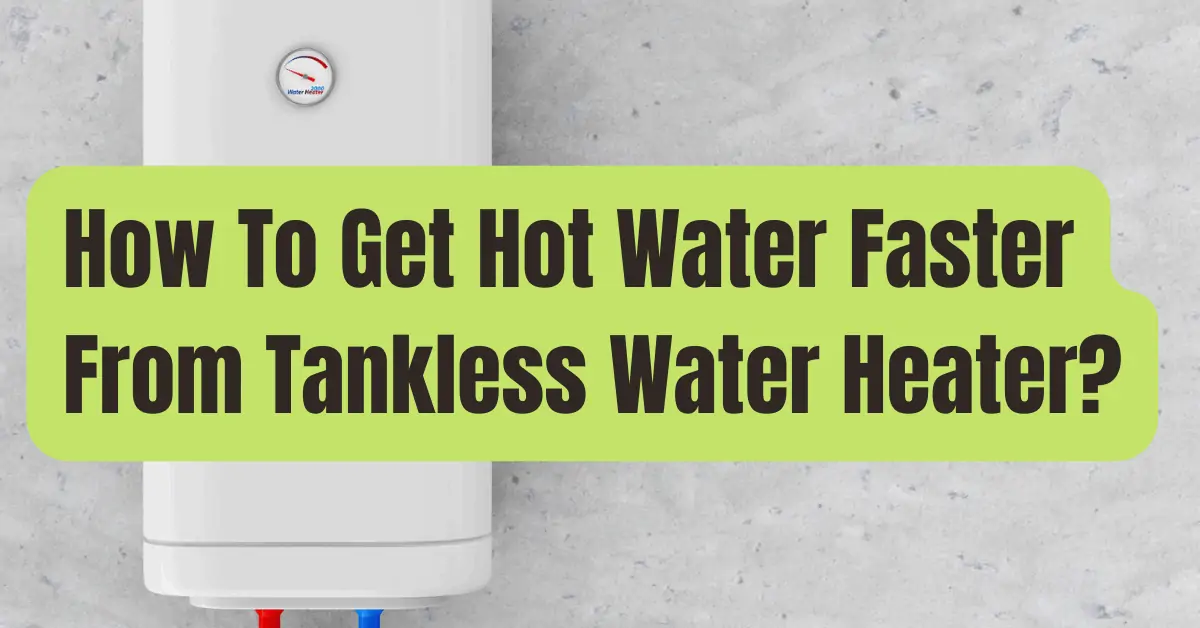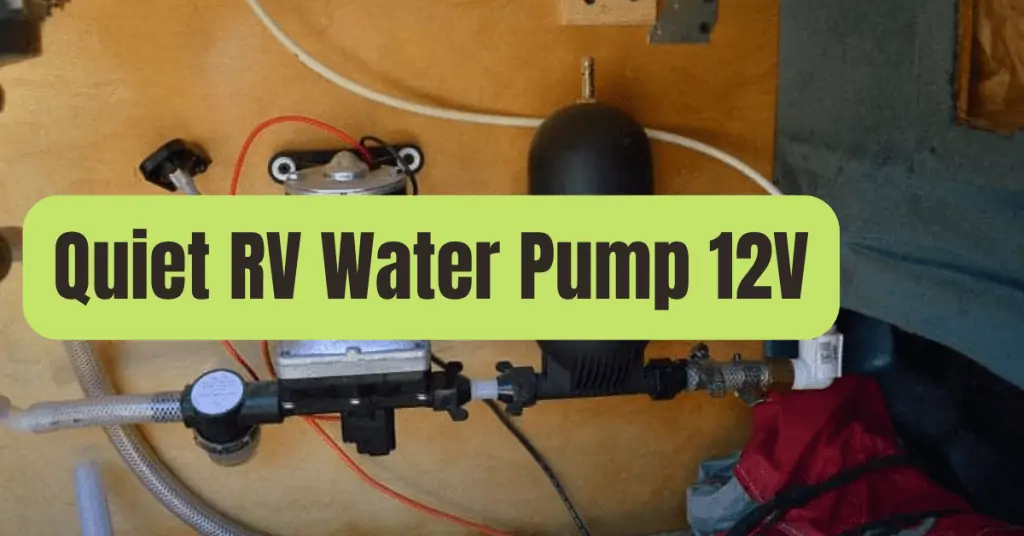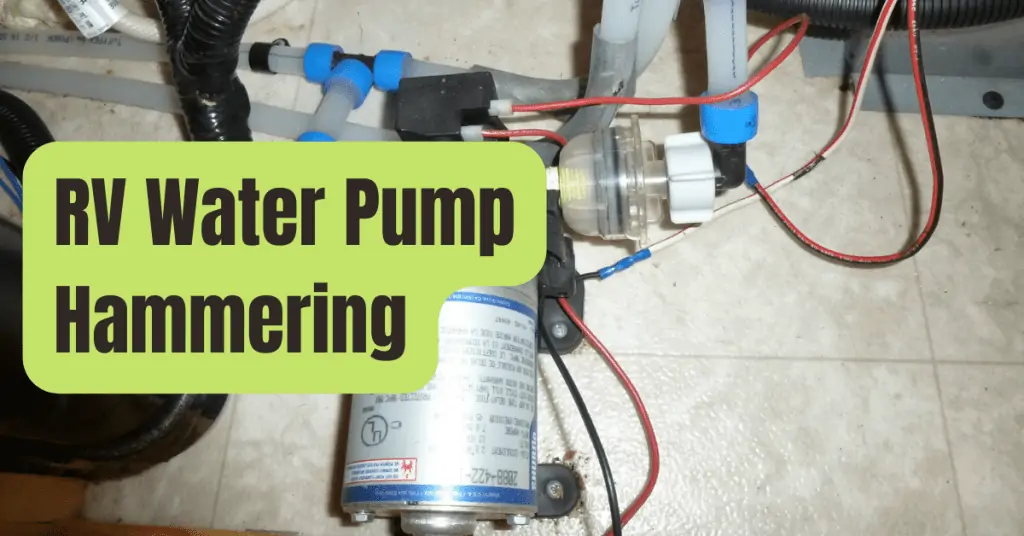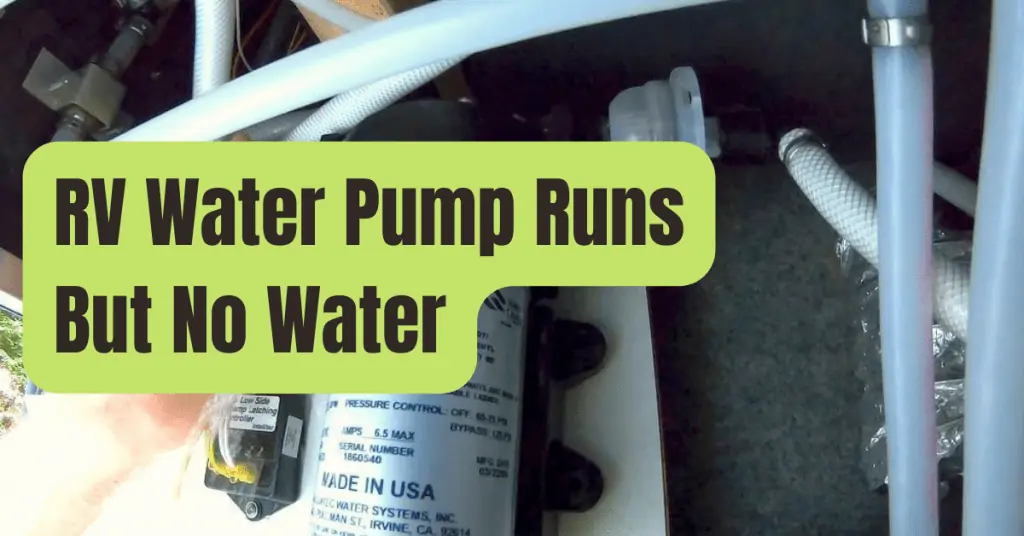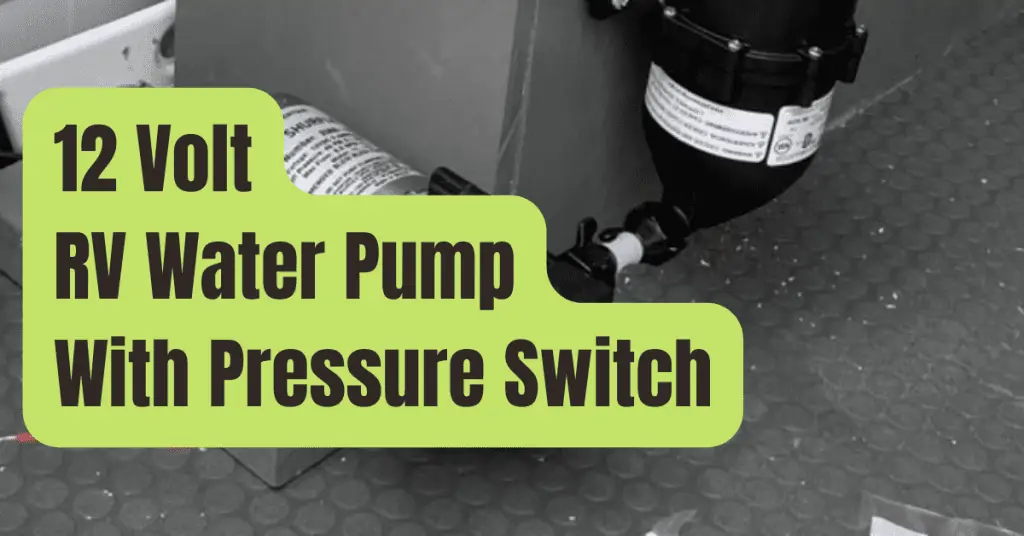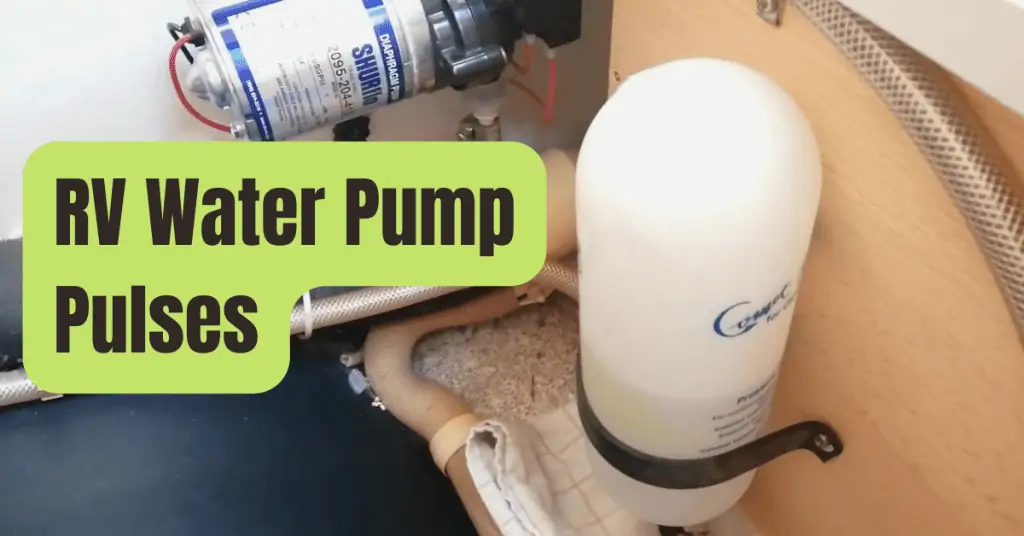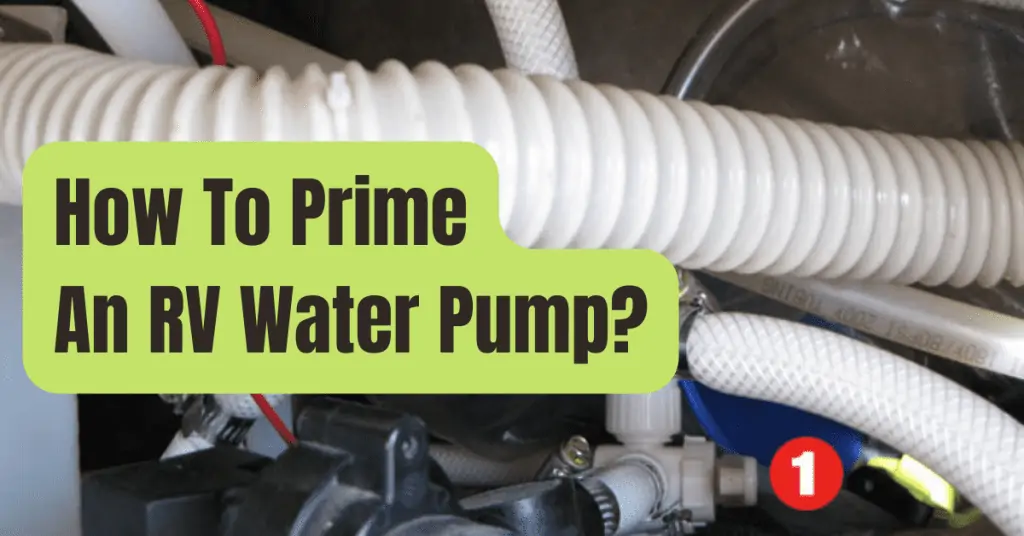The search for a method that may provide instantaneous hot water at the sink or in the shower is a typical one.
The idea of instant hot water has probably crossed the mind of just about everyone who has ever stood around watching water run down the drain while waiting for it to heat up.
This idea may not be as widespread as others, such as the pursuit of the meaning of life, but it is still likely to have done so.
When you have to wait for the water that you need, clearly this causes a great deal of trouble.
When you realize how much water is wasted, it may even make you feel a little sorry; however, you probably won’t feel guilty enough to take an ice-cold shower first thing in the morning because of it.
To our good fortune, the age-old issue of wasting time and waiting may be circumvented in a few different ways.
A recirculating system, a demand system, and point-of-use water heaters, which may either be tanked or tankless, are the four methods that can be used to provide instantaneous hot water at the tap.
Why Does It Take So Long for My Faucet to Get Hot Water?

Let’s begin by discussing the factors that contribute to the length of time it takes for the water that is dispensed from the faucet to reach a desired temperature before it is ready to use.
Although the age of a water heater and its degree of efficiency, as well as the amount of insulation that a home’s pipes have, may both be factors, the most important reason is very straightforward:
Before the hot water can be delivered to the faucet, the cold water that has been resting in the pipes must first be flushed away.
The heated water must first make its way out of the hot water heater and then make its way through a network of pipes before it can reach the faucet.
In front of that water that has been heated is the water that has been sitting and becoming cold in the pipes outside since the last time that a request was made for hot water.
There are certain circumstances in which the distance from the water heater to the faucet is rather considerable.
Take, as an example, the typical Texas house, which has two stories.
If the water heater is situated in the attic, the water in the showers and faucets located upstairs may not take as much time to become hot if the attic is the location of the water heater.
However, it may take up to a minute or two for the water to reach the desired location in the showers, sinks, and faucets located downstairs in the kitchen and bathrooms.
During the winter, it may take even longer since the initial gallon or two of water is chilled as it goes through the extremely cold pipes.
This might make the process take even longer.
So, What Are the Different Ways That You Can Get Hot Water More Quickly?
Because the requirements of each homeowner are unique, there is no “one size fits all” solution available.
However, below you will find four other techniques to get quick water from the faucet.
#1. Systems for the Recirculation of Hot Water
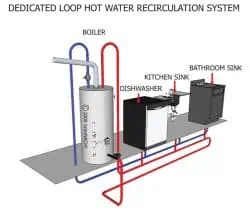
When using a conventional water heater that stores hot water in a tank, twisting the knob on the faucet to turn on the hot water begins the process of hot water traveling down the pipes.
When the request is made, however, what happens if the water in the pipes has already been heated?
In such a scenario, hot water would immediately be available at the tap.
The farthest point of a plumbing system is brought back to a water heater through a plumbing line that is part of a recirculation system.
This creates a dedicated loop of hot water in the plumbing system.
This graphic was provided by InterNACHI, a producer of equipment used in recirculating hot water systems.
It demonstrates that hot water is constantly cycling throughout the system, making it instantly accessible at any tap.
The rapid availability of hot water at each faucet and showerhead is the most significant advantage provided by the system.
This not only saves time but also cuts down on the quantity of water that is wasted.
The majority of the time, a thermostat is responsible for turning on water recirculation systems.
This thermostat detects when the water has dropped below a certain temperature and activates the system.
They also have the capability of being triggered by a timer, which allows the system to be turned off at periods when the house is unoccupied or when hot water is not required, so reducing the amount of money spent on energy bills.
#2. Demand Hot Water Systems
A buyer of a new house may request that the plumbing system be built with a recirculation system that calls for a dedicated loop of hot water to be installed while the home is being constructed.
But what if your home isn’t plumbed to for a recirculating system? Is that still possible?

The recirculating system that was detailed above could need considerable alterations to the piping that is already in place.
On the other hand, a demand system operates very similarly to a recirculating system, and it may be installed in residences that have already been built.
Under the sink or bathtub fixture in the kitchen or bathroom that is the farthest away from the water heater, a pump is connected to the hot and cold water pipes to create a demand hot water system.
At the touch of a button, the water that would typically go down the drain and into the cold water line is instead rerouted to the water heater through the cold water line.
Meanwhile, water from the water heater that is heated to a higher temperature is supplied to the faucet.
The pump will cease running after the temperature of the water at the furthest fixture has been heated to the appropriate degree.
This is because the water pipes will already be full with water.
#3. Water Heaters That Are Installed At The Point Of Use
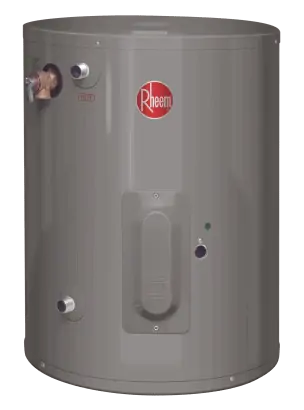
Exactly as its name indicates, a point-of-use water heater places a water heating source in close proximity to the location of an appliance that requires heated water, such as a sink, shower, or bathtub.
Many homes install point-of-use water heaters in order to heat water at a fixture that is located a significant distance from the main tank water heater in the house.
In locations where there is a high demand for quick hot water or where it is most easy to do so, they may also be used to heat water.
It is possible to include point-of-use water heaters into an already existing plumbing infrastructure.
The water tank in a tank point-of-use water heater is often smaller than the water tank in a regular tank water heater for the whole house.
Tank water heaters that are point-of-use exist in capacities ranging from 2.5 to 20 gallons, and their size is determined by the amount of hot water that is required.
As a result of this elimination of the need for the water to travel any distance to reach the fixtures, they are fantastic at supplying quick hot water.
The rapid hot water helps save both time and money, in addition to conserving water.
#4. Water Heaters That Are Installed Directly At The Point Of Use
This water heater, much like the tankless system that heats the water for the whole house, only kicks on when there is a need for hot water.
Tank water heaters, on the other hand, keep hot water in a storage tank so that it may be delivered to a faucet when it is requested; tankless water heaters go to work as soon as the request is made.
When a hot water faucet is switched on, cold water is sent via a pipe into the tankless water heater.
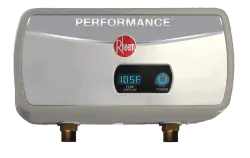
The tankless water heater then warms the water using either an electric element or a gas burner, depending on the kind of heater it is.
The capacity of a tank water heater is determined by its storage capacity, but the capacity of a tankless water heater is determined by the number of gallons of water it can heat in one minute.
(The vast majority of tankless water heaters designed for point-of-use are rated at between 2.0 and 2.5 gallons per minute.
The following is a helpful estimate of the flow rate required for various household appliances (showers, sinks, washing machines, etc.).
A tankless point-of-use water heater, like a point-of-use water heater that includes a tank, can provide nearly instantaneous hot water because it is placed in close proximity to the fixture that requires hot water.
In this way, it functions similarly to a point-of-use water heater that includes a tank.
It is important to note, however, that tankless water heaters are unable to provide hot water as rapidly as tank water heaters.
This is due to the fact that there is a delay of a few seconds before the water from a tankless water heater reaches the appropriate temperature.
In addition, tankless point-of-use water heaters are required to be electric, which warms the water more slowly than a gas flame would.
The tankless point-of-use water heater illustrated here has a width of less than 11 inches, a height of less than six inches, and a depth of just over two and a half inches, allowing it to be installed in confined spaces under almost any sink.
Aren’t There Some Tankless Water Heaters That Don’t Provide Instant Hot Water?
The answer is both yes and no; they do and they don’t.
Because tankless water heaters begin heating water the instant you turn on the faucet, it is easy to see why some people assume tankless water heaters deliver hot water on demand.
Tankless water heaters begin heating water the moment you turn on the faucet.
However, much like a tank water heater, a tankless water heater confronts the same difficulty of delivering hot water through the pipes and to the faucet where it is required because of the location of the water heater in relation to the faucet.
Anyone who installs a tankless water heater with the assumption that turning on the hot water faucet would result in a torrent of piping hot water is in for a rude awakening.
This is not how tankless water heaters work.
This is not to suggest that tankless water heaters do not provide some fantastic advantages; the most significant of which is an endless supply of hot water (so long as the flow rate of the water heater is not exceeded by the number of faucets and appliances using water at the same time).
However, despite the fact that tankless water heaters do not have a storage tank, which means they do not risk running out of hot water, these heaters are not able to move the heated water through the pipes much faster.
If your conventional water heater or tankless water heater is located in an attic above the second level of your home, but your shower is located on the first floor, you will have to wait for hot water unless you utilize one of the methods discussed above.
Is There a Way for Me to Get Hot Water Quicker If I Install a Water Heater Booster?
Another question that some individuals ask, and the terrible response to this one is that the answer is not yes.
Increasing the quantity of hot water that a tank water heater is capable of providing may be accomplished with the use of a device known as a tank water heater booster.
This device is attached directly to the water heater.
Boosters for tank water heaters perform their function by mixing cold water that comes in via the input valve with hot water that comes out of the hot water valve.
When used in conjunction with a tank booster, a tank water heater may be adjusted to produce water at temperatures higher than the standard 120 degrees Fahrenheit that it produces.
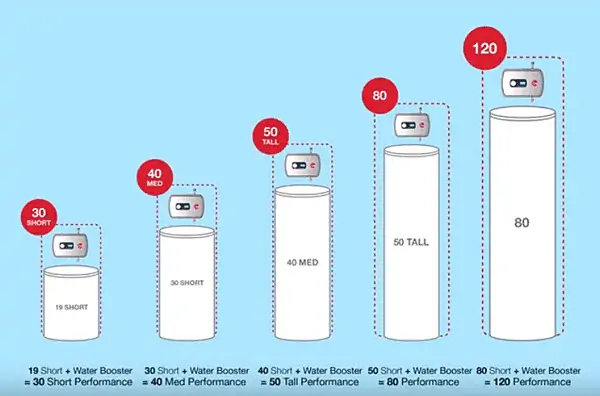
The temperature of the water reaches 120 degrees when “extra hot” water is combined with cold water, and the amount of hot water that may be produced as a result of the combination of cold and hot water is increased.
The diagram shown here demonstrates how a booster “boosts” the capacity of a water heater with a tank of 50 gallons to that of an equivalent tank of 80 gallons, with increments for additional capacities as indicated.
As a consequence, there is more warm water available for usage before the tank completely empties.
However, despite the fact that a water heater booster enables one to take more leisurely showers, it does not provide instantaneously hot water for such showers.
Either the water must already be heated in a pipe when it is requested, or it must be heated close to the location where it is demanded, for instant hot water to be available at the faucet.
Additional Suggestions Concerning Instantly Hot Water
#1. Insulate Water Pipes
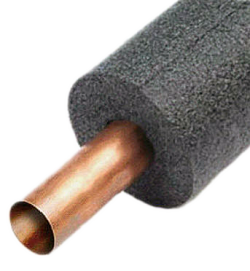
Insulating the pipes that carry hot water will prevent heat from escaping as the water flows from the water heater to the faucet.
In addition, the insulation will keep the pipes warm for a longer period of time, which will come in handy the next time you want hot water.
Will you get hot water at once if you do this? No.
However, this will cut down on the amount of time you spend waiting for hot water at the sink, and it may help lower your monthly utility expenditures.
#2. Have Your Water Heater Checked Once A Year For Maintenance.
In order to get the most out of your water heater, regular maintenance is essential, regardless of whether it has a tank or not.
However, if your water heater is not operating as effectively as it should be, it will take longer time to produce the warm water that you need.
When it comes to a tank water heater, which the vast majority of homes in the United States are still equipped with, performing routine maintenance on an annual basis, which includes flushing the tank, inspecting the anode rod, and testing the temperature and pressure (T&P) relief valve, helps to ensure that the water heater is both safe and effective.
#3. For Assistance With Installation, Speak With A Licensed Plumber.
The installation of a recirculation system is always a work for an experienced plumbing plumber, and the other choices for obtaining instant hot water at the faucet need technical competence as well.
Getting instant hot water at the faucet
Always use a certified plumbing specialist because incorrectly built water heaters may be very hazardous and carry the potential of exploding or causing a fire.
If you want to avoid these risks, it is imperative that you hire a plumber who is fully licensed.
Conclusion
We’ve all experienced the frustration of having to wait for hot water when we’re in the shower or at the sink.
It’s possible that we’ve just been held up for a minute or two, but this kind of thing occurs often enough that it’s becoming quite frustrating.
It should thus come as no surprise that those who are knowledgeable in the art of water heating have devised various alternatives.
Create a dedicated loop of heated water that is continually flowing through the system so that hot water is instantly accessible at every faucet.
This is the goal of recirculating systems.
- Recirculating Systems: Construct a dedicated loop of heated water that is continuously circulating through the system. This ensures that hot water is readily accessible at each and every tap.
- Demand Systems: These systems use a pump that is connected to both the hot and cold water lines. When the user presses a button, the pump sends cold water back to the water heater while simultaneously bringing hot water to the faucet.
- Point-of-use Water Heaters: Available in tank and tankless variants, both have the benefit of being near to where hot water is required, avoiding the need to wait for water to travel via pipes.
Point-of-use water heaters are available in both tank and tankless models.
There are a variety of solutions available to you in the event that you are interested in obtaining instantaneous hot water at the sink.
Now that you have more information about the options, you should get in touch with a qualified plumbing specialist who can assist you in determining what would work best for your house and who can also offer you with excellent installation that will keep you and your family safe.
Are you prepared to at long last have hot water instantly available at the faucet?

